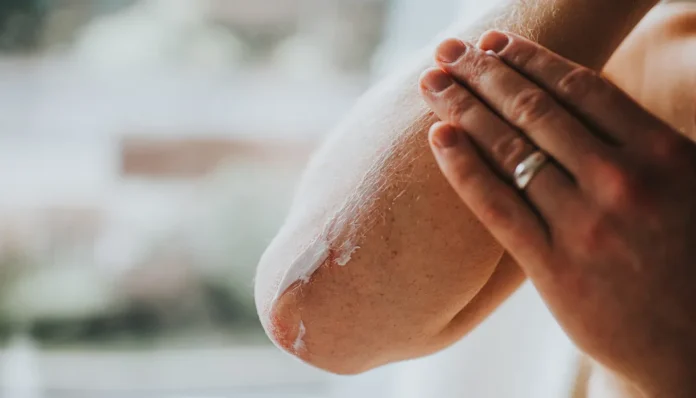That irritant on your skin causing you sleepless nights could be a skin disease. But don’t just conclude before seeing a doctor.
Before then, here are ten communicable skin infections, their common symptoms, modes of transmission, and how to deal with them:
- Ringworm (Tinea):
Symptoms: Red, itchy, circular patches on the skin with raised edges.
Transmission: Direct skin-to-skin contact, sharing of contaminated items.
Management: Antifungal creams or oral medications as prescribed by a healthcare provider.
- Scabies:
Symptoms: Intense itching, pimple-like rash, and small burrows under the skin.
Transmission: Close personal contact or sharing bedding/clothing with an infected person.
Management: Topical scabicide creams or lotions prescribed by a healthcare provider.
- Impetigo:
Symptoms: Red sores or blisters that break open, ooze, and form a honey-colored crust.
Transmission: Direct contact with sores or contaminated items.
Management: Antibiotic ointments or oral antibiotics as prescribed by a healthcare provider.
- Herpes (HSV):
Symptoms: Painful sores or blisters, often around the mouth or genital area.
Transmission: Direct contact with sores, including kissing or sexual contact.
Management: Antiviral medications prescribed by a healthcare provider.
- Cellulitis:
Symptoms: Red, swollen, and painful skin with fever and chills.
Transmission: Bacterial infection through breaks in the skin.
Management: Antibiotics prescribed by a healthcare provider.
- Fungal Nail Infections (Onychomycosis):
Symptoms: Thickened, discolored, and brittle nails.
Transmission: Fungal spores in warm, damp environments.
Management: Oral antifungal medications or topical treatments as prescribed by a healthcare provider.
- Molluscum Contagiosum:
Symptoms: Small, raised, and pearly-white bumps on the skin.
Transmission: Direct skin-to-skin contact.
Management: Cryotherapy, topical treatments, or other procedures as recommended by a healthcare provider.
- Lice (Pediculosis):
Symptoms: Itching, small red bumps, and visible lice or nits (eggs) in hair.
Transmission: Direct head-to-head contact or sharing of combs, brushes, and hats.
Management: Over-the-counter or prescription lice treatments, washing of infested items.
- Tuberculosis of the Skin (Cutaneous TB):
Symptoms: Nodules, ulcers, or abscesses on the skin.
Transmission: Airborne, through respiratory droplets.
Management: Antituberculosis medications and isolation for those with active tuberculosis.
- Folliculitis:
Symptoms: Red, inflamed hair follicles with pustules or bumps.
Transmission: Often due to bacterial or fungal infection and can result from using hot tubs or contaminated razors.
Management: Topical antibiotics or antifungal creams, improved hygiene practices, and avoiding potential sources of contamination.
For all communicable skin diseases, it’s crucial to seek medical advice and treatment from a healthcare provider. Proper hygiene, avoiding close contact with infected individuals, and taking prescribed treatments are essential steps to deal with these conditions conclusively.
Additionally, educating others to prevent transmission is crucial.









